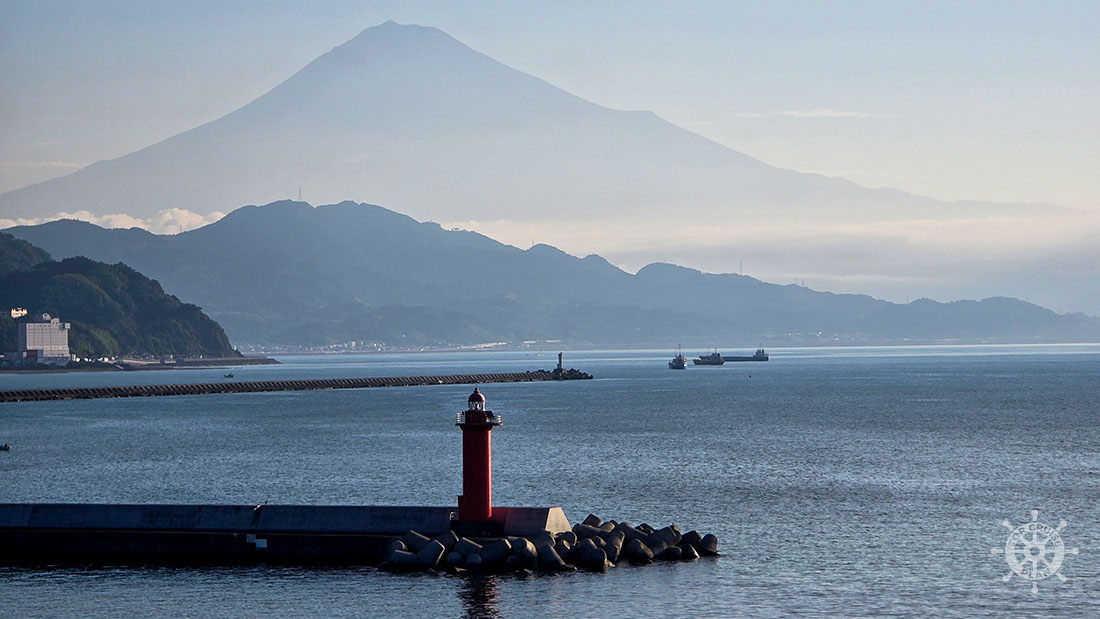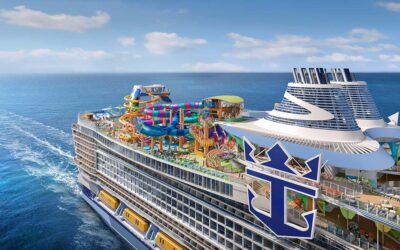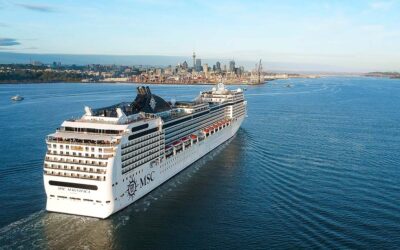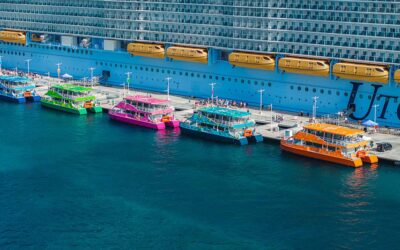Welcome to a new article in the series about our experience in South Korea and Japan aboard a cruise. After visiting Nagoya, today we arrive to Shimizu.
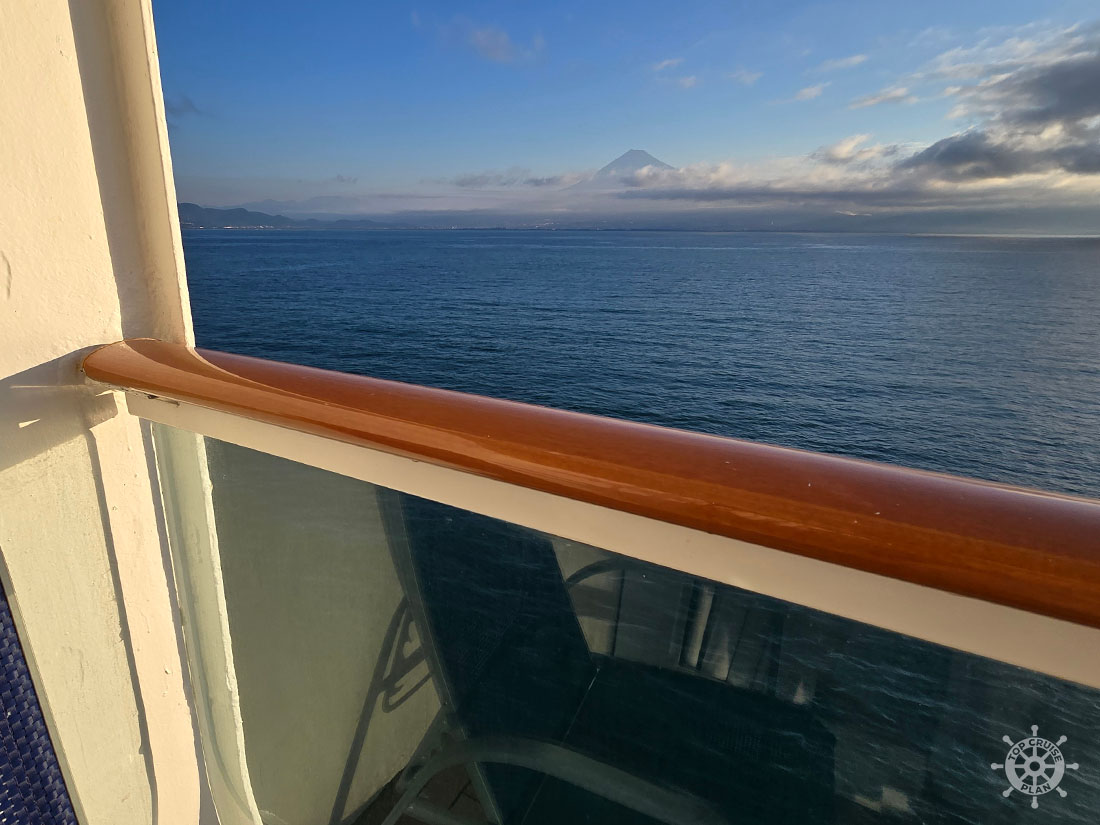
From 5:30 in the morning, we could see Mount Fuji from the balcony of our cabin. In Japan, the sun rises very early in summer. Mount Fuji stood out in the landscape—unmistakable. Although it wasn’t a very clear day, there it was before us, emerging through the clouds. It was one of the most beautiful port arrivals because of how spectacular Mount Fuji is. In person, it’s much more impressive than in photos. It’s not just another mountain in the landscape—it really catches your attention how it rises on the horizon. We’ve been fortunate to see many landscapes from a cruise, but we had never seen anything like this.
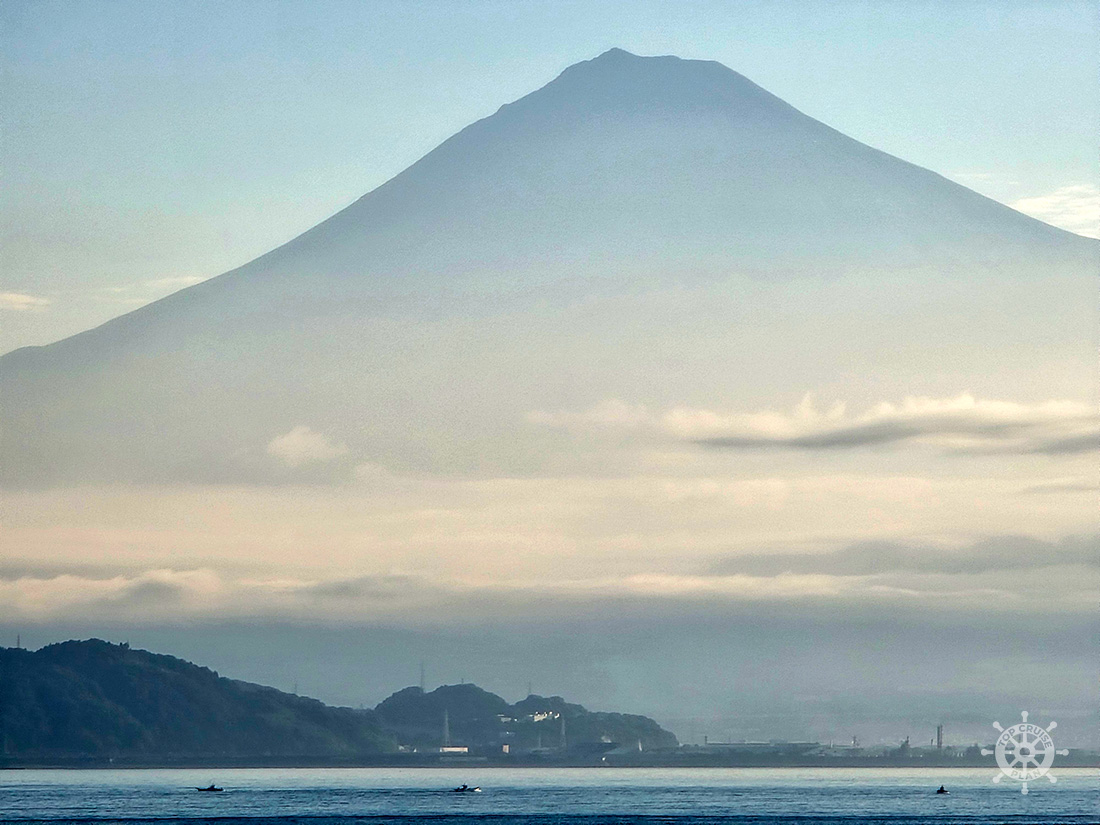
Before arriving at port, we knew that Uber wasn’t available in Shimizu, so we thought the best option was the train or a private excursion, since the cruise line’s excursions were quite expensive. The cruise line offered a free shuttle from the port to the city center.
Shimizu Port, located in Shizuoka Prefecture, is considered one of the three most beautiful ports in Japan. Its worldwide fame is due to the spectacular views of the iconic Mount Fuji, which dominates the horizon on clear days. This natural port is not only an important commercial and fishing gateway—famous for fresh tuna landings—but also a popular tourist destination.
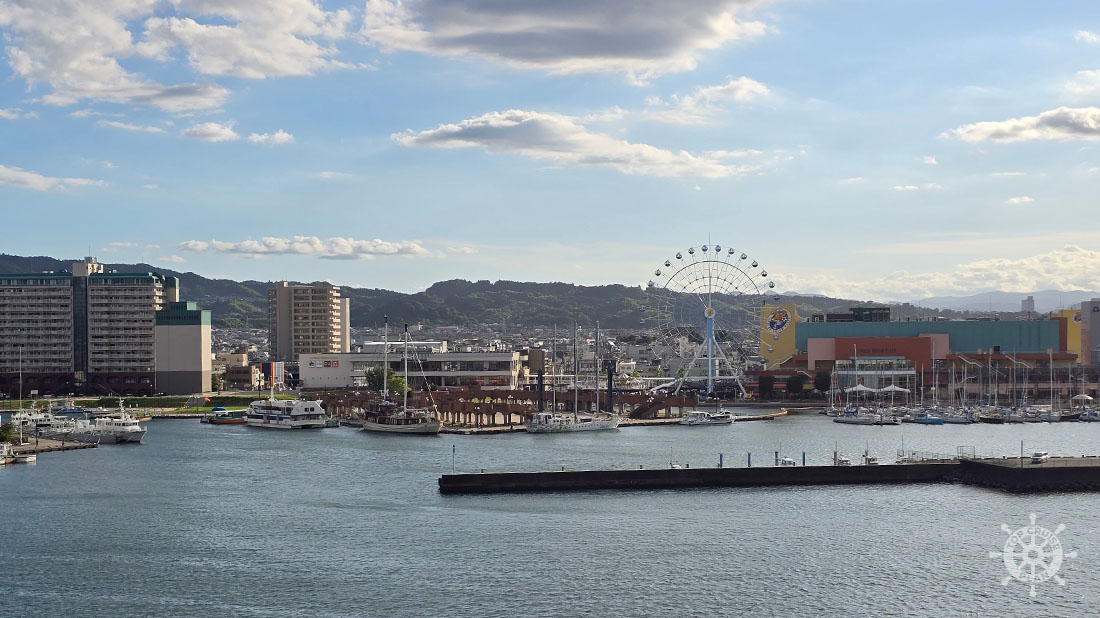
The landscape is complemented by the nearby Miho no Matsubara pine grove, a UNESCO World Heritage site, creating a very unique classic Japanese scene.
When we arrived at the port, we felt a bit uncertain. There was quite a lot of private excursion offerings; they even approached you to explain everything you could visit, and they carried signs with the routes. There was also a taxi stand, but we were concerned that on the way back there wouldn’t be any taxis available.
Our goal was to go to the Mt. Fuji World Heritage Centre, Shizuoka. In the end, we decided to take the shuttle that took us to the city center. From there, we went to a train station to get information. We took two trains: one that took us to Fujinomiya, where we transferred to Shizuoka.
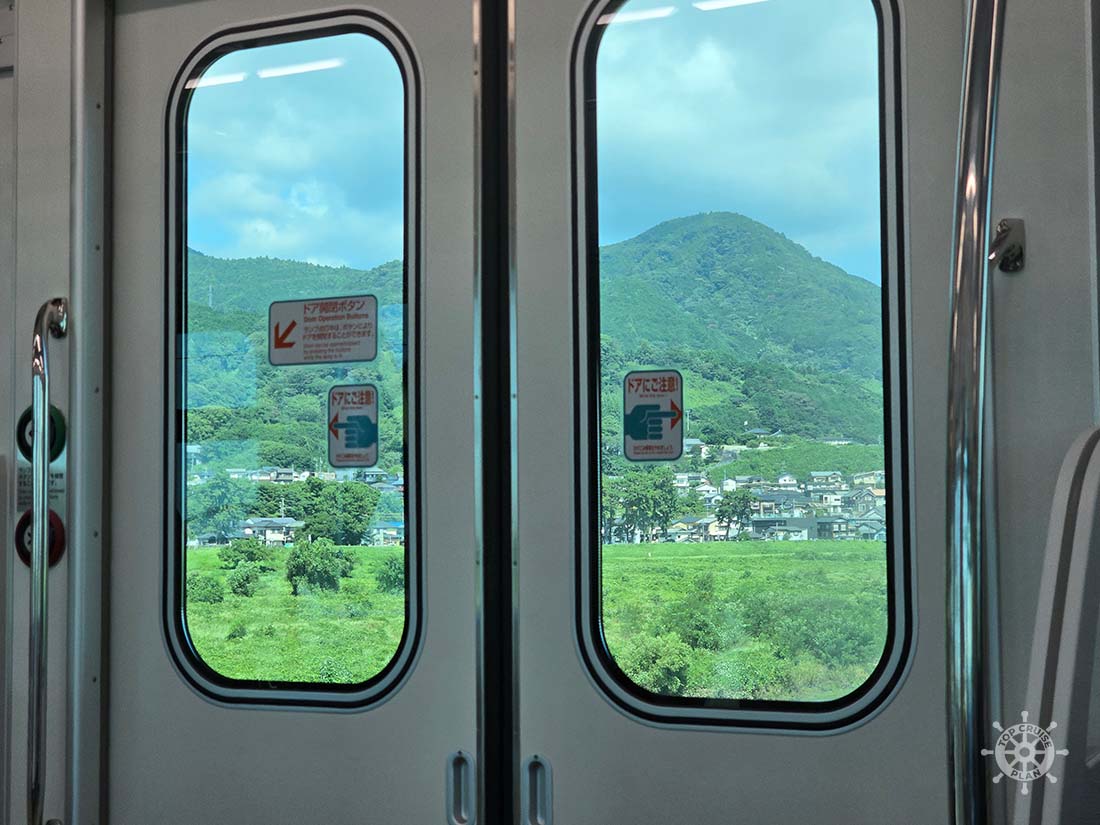
Then, walking about 10 minutes, you reach the Mt. Fuji World Heritage Centre. It’s hard to get lost on this last stretch because there were groups of people who had thought the same thing as us.
Mount Fuji, Japan’s highest and most iconic peak, is located on the main island of Honshu. Our goal on this cruise stop was to see it up close. To learn about Mount Fuji in depth—its history, culture, and nature—we chose to visit the Mt. Fuji World Heritage Centre, Shizuoka, located in Fujinomiya City. Designed by renowned architect Shigeru Ban, this center stands out for its wooden building in the shape of an inverted cone that reflects in a pond, evoking the image of Mount Fuji. It’s very modern.
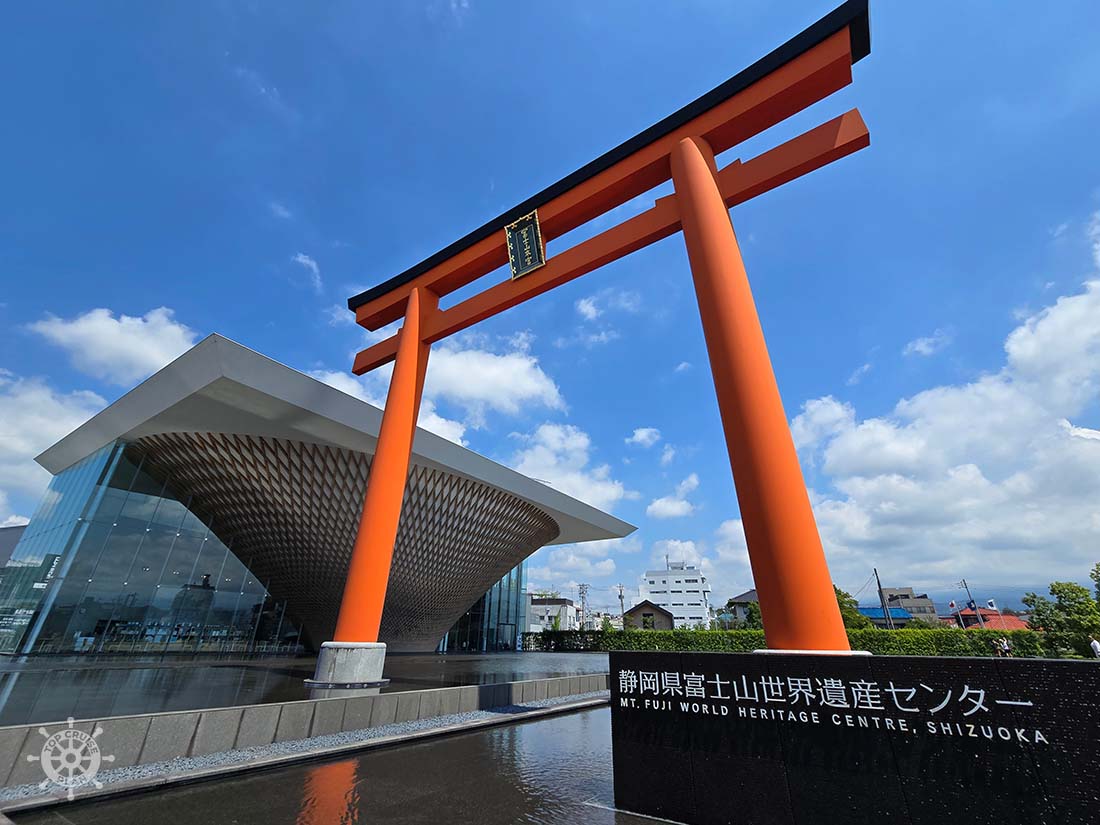
Inside, a 193-meter spiral ramp simulates the ascent of the mountain, showing landscapes and scenes that change as you climb. It’s very well done: the lighting is dim and, as you advance, the walls become screens that project high-speed videos of the mountain’s changing landscapes—from the forests at the base to the rocky summit—creating a virtual pilgrimage through the seasons.
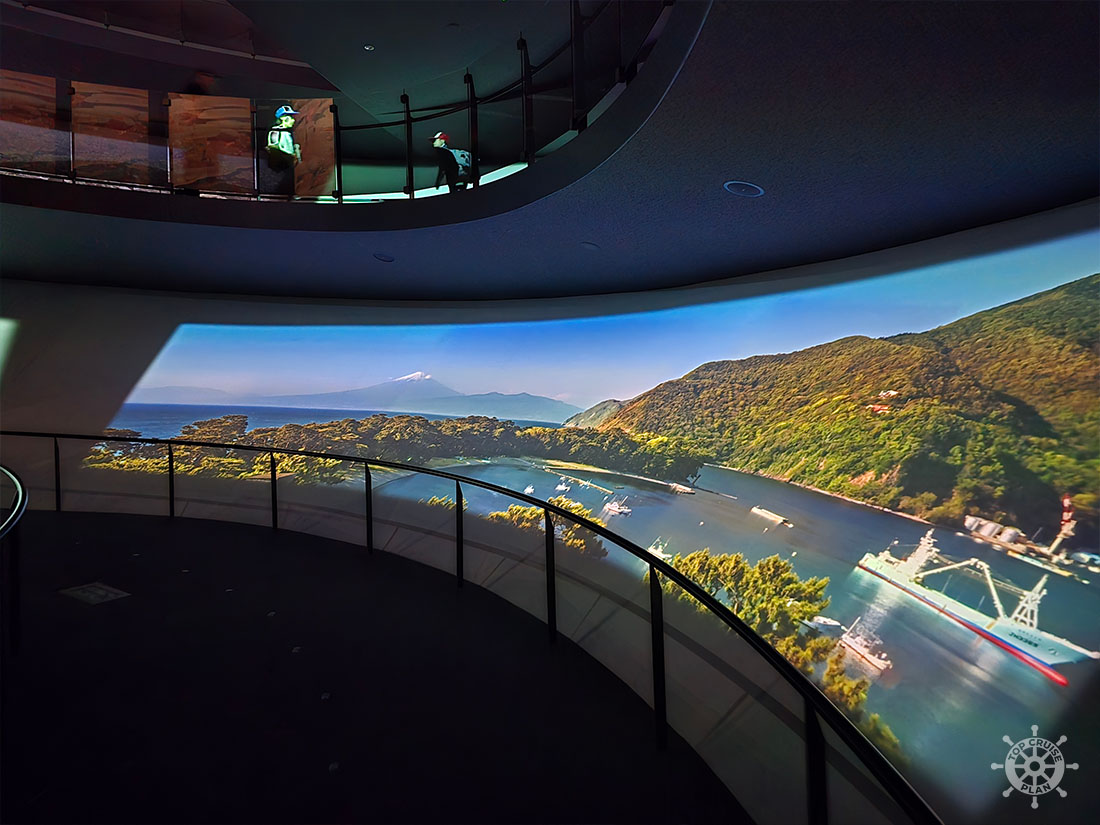
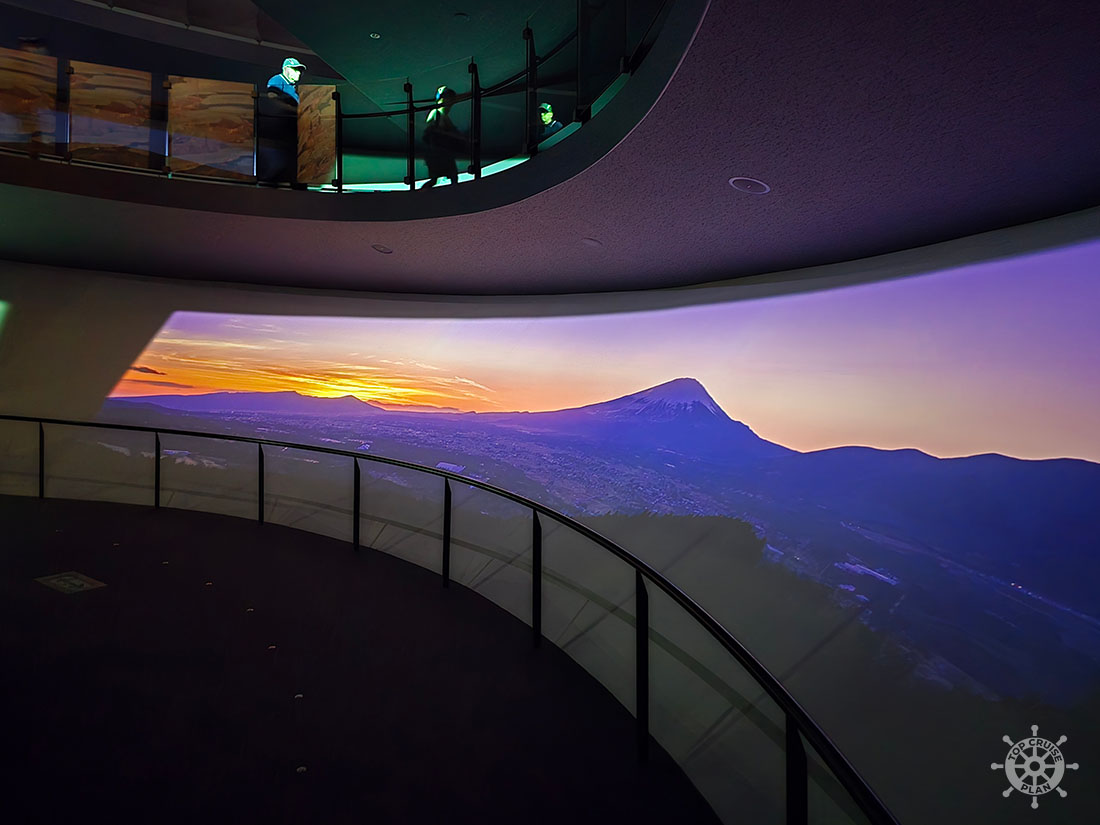
The different floors house detailed exhibitions about Fuji’s volcanic formation, its ecosystem, and its deep connection to Japanese faith and art.
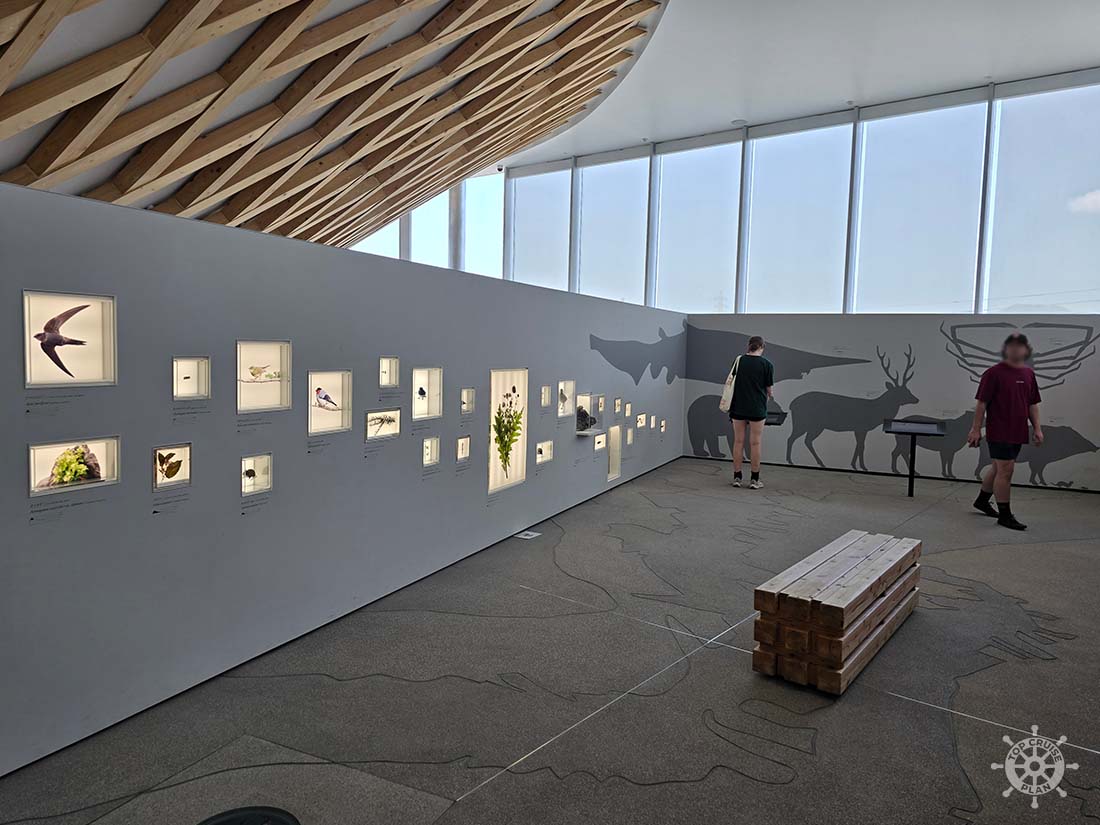
The tour culminates in a spectacular observation terrace with direct, unobstructed views of the real Mount Fuji. The day we went, it was a bit cloudy and we couldn’t see Mount Fuji clearly, but we felt very satisfied with our visit to this museum. We learned a lot, especially that Mount Fuji is more than just a mountain.
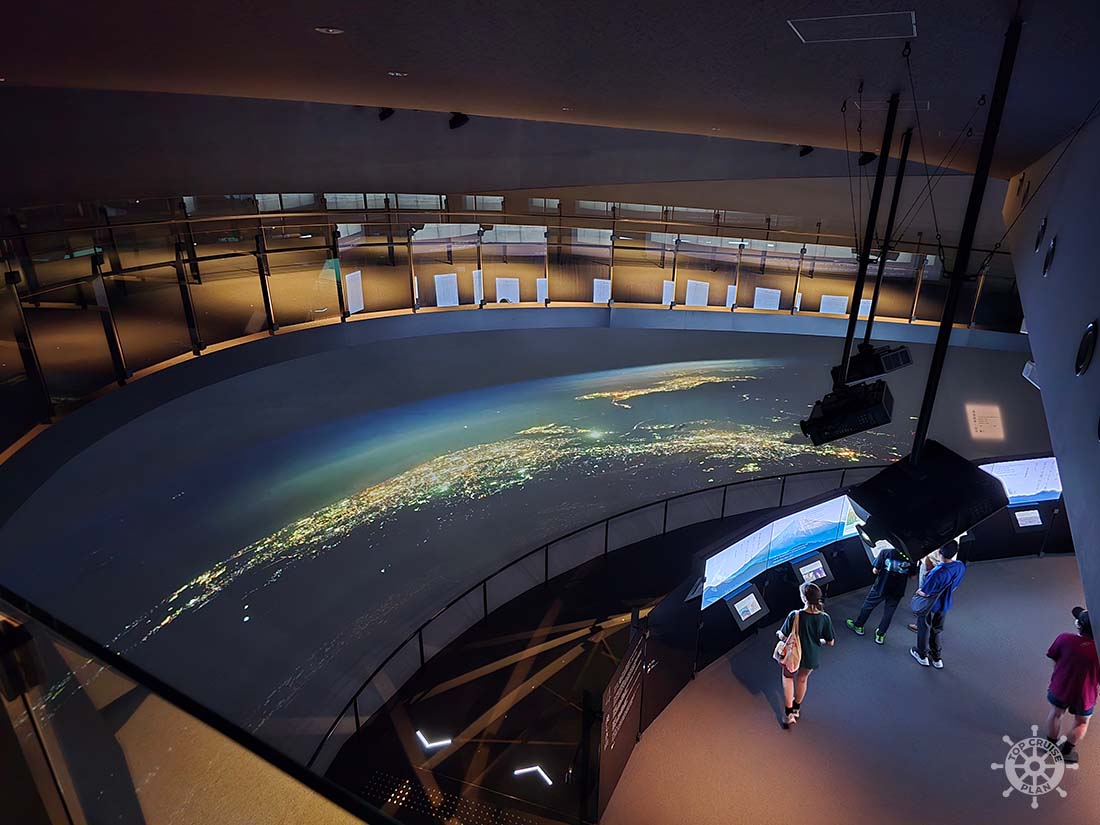
Another way to see Mount Fuji is to go to Miho no Matsubara, a legendary pine grove along the coast, designated as a UNESCO World Heritage site. It can be reached in about 20–30 minutes by taxi or local bus from the port. That’s why we ruled it out, since there weren’t many taxis.
For an elevated view, consider visiting the S-Pulse Dream Plaza shopping center, located at the port. From its upper floors or the Ferris wheel, you can enjoy an excellent panoramic view.
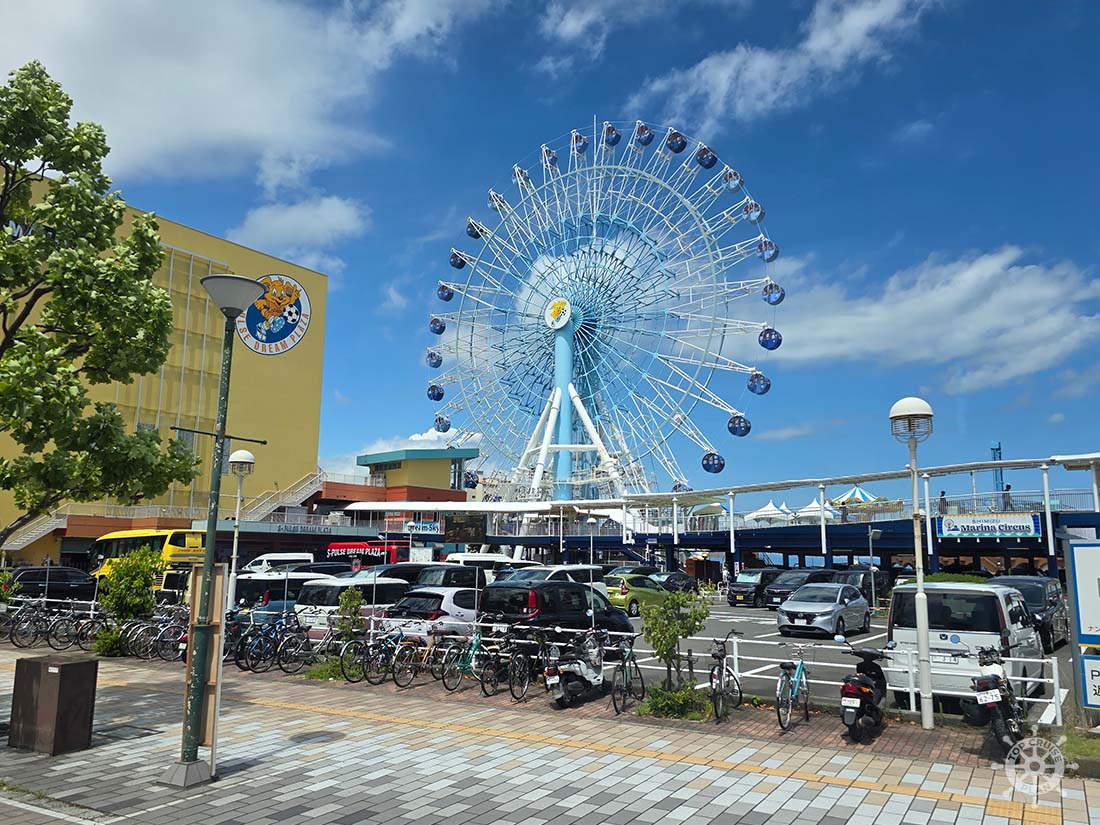
We spent almost the entire morning on this excursion. On the way back, we returned to the ship’s shuttle stop. Since we had a bit of time left, we went into a shopping mall next door, although it was quite small compared to the ones we visited on previous cruise stops.
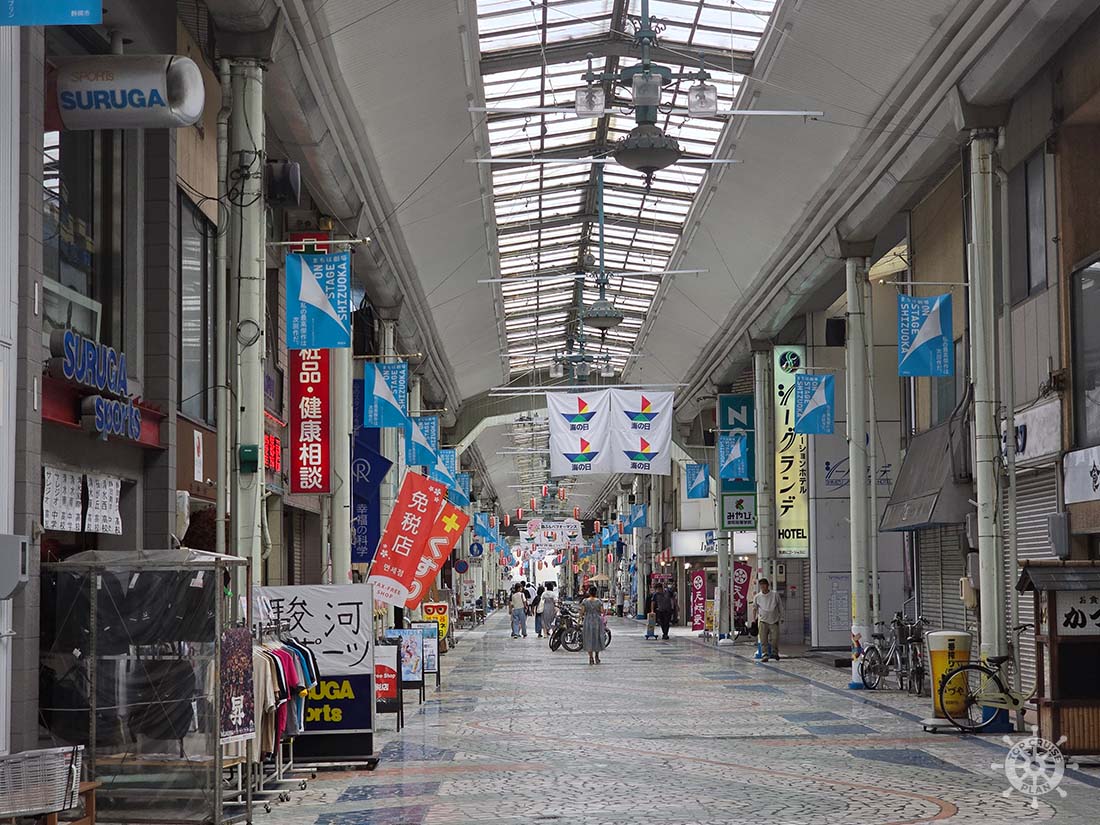
We returned to the ship for lunch. That night was special because they were doing the cruise farewell show in the theater, since the next day we would be arriving in Tokyo.
The end-of-cruise show is the grand farewell in the main theater. It brings together the entire cast of performers—singers, dancers, and musicians—in a medley with the best numbers from the week. Energetic choreography, Broadway hits, and emotional ballads intertwine in an unforgettable celebration. Each cruise line adapts it to their style, but they’re always very entertaining.
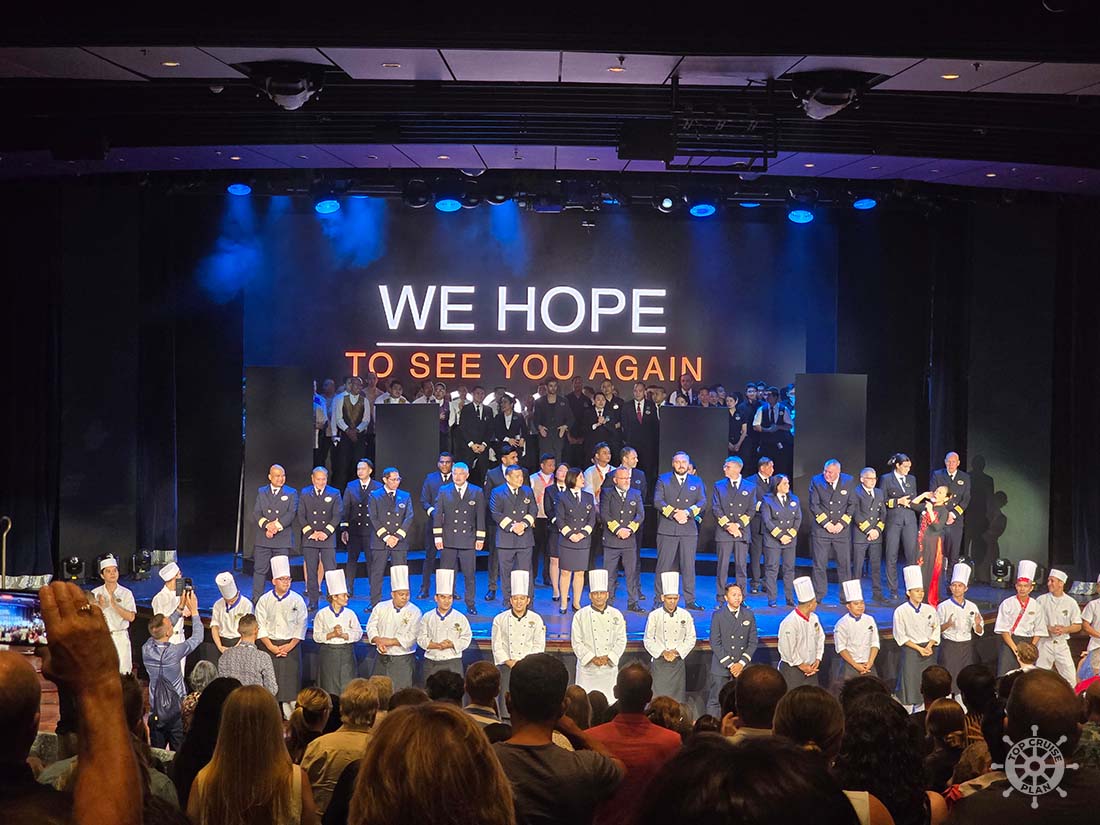
Hosted by the cruise director, this show is the crew’s official “see you soon.” Everyone parades by, from the captain to the waiters; the entire crew lines up in the theater. That’s when you realize all the staff behind a cruise. It’s a final night of applause and magic, designed to leave passengers with the most spectacular memory of their adventure at sea.
Although a bit sad because the cruise was almost over, we were anxious to reach the last port: Tokyo. The next article will be available soon!
